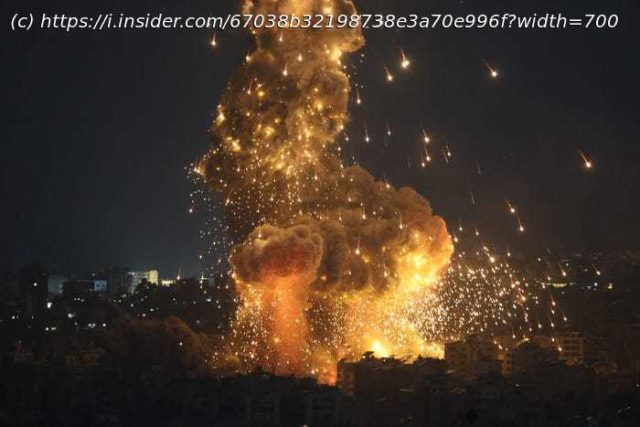Tensions are at boiling point in the Middle East with fears of a wider war, a year after the October 7 massacre ignited a powder keg in the region.
On the early morning of October 7, 2023, air raid sirens began blaring in Israel, warning its citizens that an attack was in progress.
Hamas, a militant group much of the West has designated a terrorist organization, launched a highly coordinated strike that the Israel Defense Forces would later say killed about 1,200 people.
One year after the massacre, the Middle East has only plunged deeper into violence and is on the brink of a broader war.
Paths to de-escalation, largely facilitated by the US, have repeatedly failed. And Israel appears to be inching closer to a direct conflict with Iran, a grim prospect that has been avoided for years as the two countries limited their fight to proxies in a shadow war.
The results of the yearlong conflict, with origins that date back decades, have been costly for Israel and the entire Axis of Resistance, Chuck Frielich, a former deputy national security advisor who served for over 20 years in Israel’s security establishment, told Business Insider.
„Israel has turned the tide and has the Axis of Resistance on the defensive. Hamas has been defeated militarily, though not politically, and remains in political control in Gaza“, Frielich said, adding that Iran is now in a vulnerable position.
„Conversely, Israel was in the midst of a multi-front war which may result in significant damage to its homefront and is deeply isolated in the world“, he added.A year of bloodshed
Israel’s response to Hamas‘ attack on October 7 was a massive bombardment campaign and later ground incursion in Gaza, which Palestinian authorities say have left about 42,000 people dead.
Amid the early stages of that campaign, the first high-profile expansion of the greater conflict blew open in late October, when Yemen’s Houthi rebels began attacking commercial ships seeking passage through the Suez Canal and the Gulf of Aden.
The Houthis, historically backed and armed by Iran, said they were declaring a show of support for Hamas by attacking ships linked to Israel, though they were often found to have used drones, missiles, and raiding parties to harass vessels with no direct relation to it.
With the Houthi attacks threatening to close off a vital international shipping lane, the US and its allies and partners established a heavy military presence in the Red Sea to fend off the rebels.
January saw the West’s most direct and overt military involvement in the conflict, when the US, UK, and their allies barraged Houthi targets with airborne, surface, and subsurface-launched strikes after warning the rebels repeatedly to cease their attacks.
The campaign has dragged on for almost a year with no end in sight, and the US has been rotating multiple aircraft carrier groups into the region while carrying out further strikes on Houthi territory.
To the north, Syria became the site of further conflict in April, when Israel launched a strike on the Iranian consulate in Damascus, killing several senior officials of the Iranian Revolutionary Guard Corps, including two generals.
Related stories
Farzin Nadimi, a senior fellow at The Washington Institute for Near East Policy, previously told BI that the strike was significant because it was the „first time Israel struck an official Iranian government-affiliated site with high-ranking people inside.






